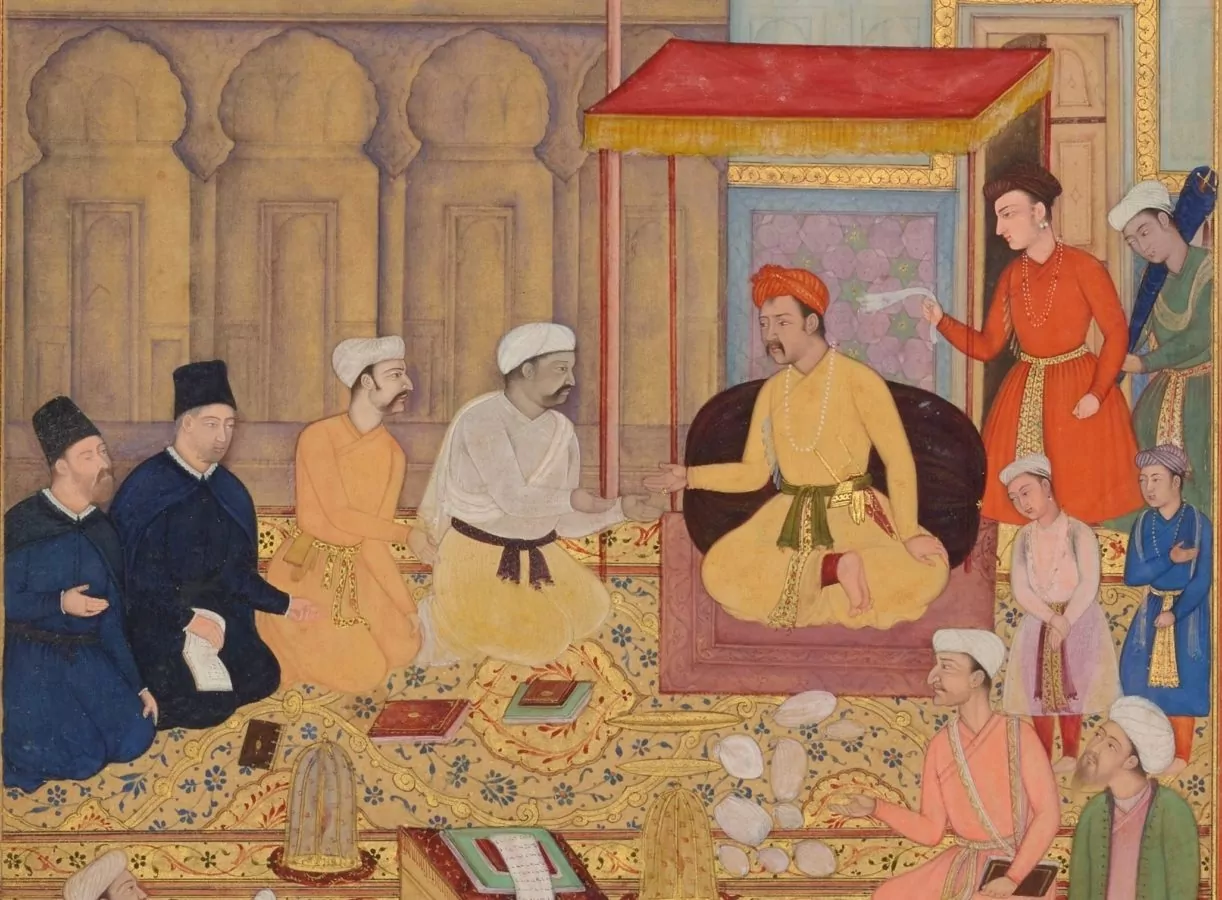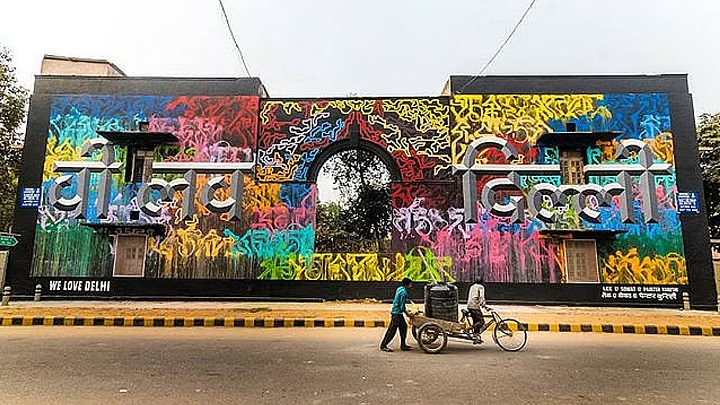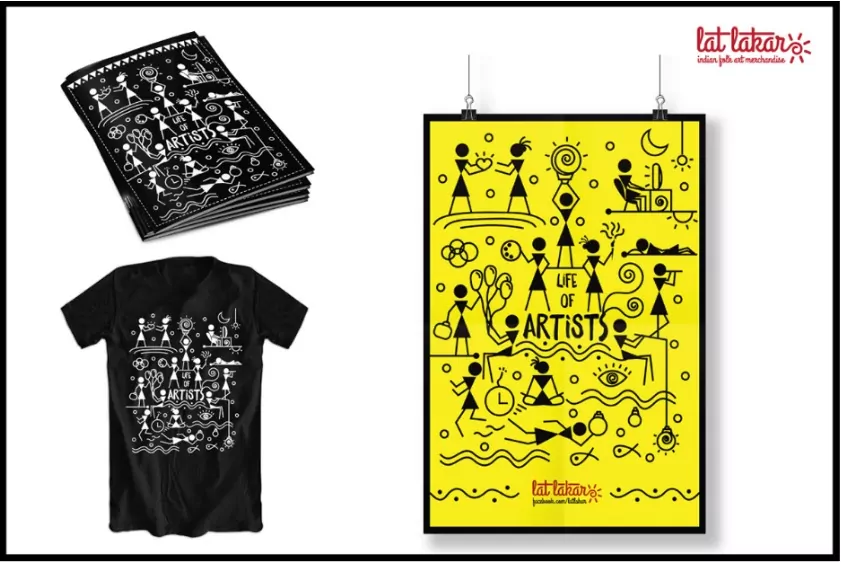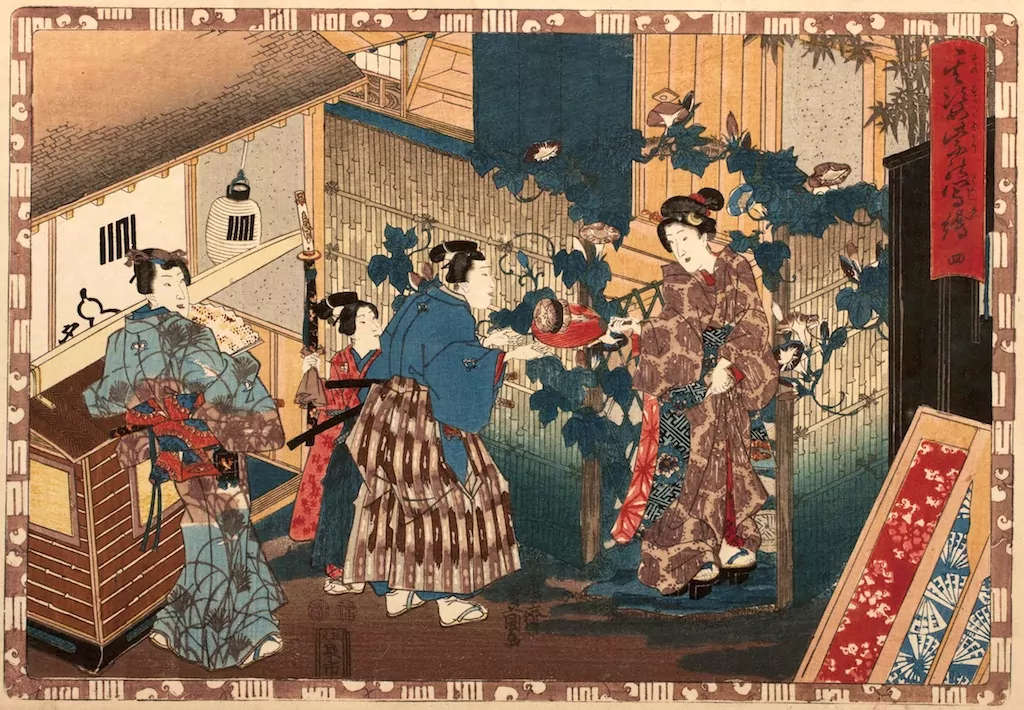While miniature paintings existed as early as the 9th century in India, they didn’t become a widely celebrated art form in the country until the establishment of the Mughal Empire in 1526. For those who remember their history lessons, the Mughal empire was prevalent in the Indian subcontinent from 1526 CE to 1857 CE, which also witnessed a huge patronage of the arts. Let’s take a look at the various themes, techniques, and styles used in Mughal miniature paintings.
Where did Mughal miniature paintings originate from?
Founded in 1526 by Babur, the Mughal Empire led to the rise of miniature paintings in India. While Babur possessed a deep appreciation for art and literature, his short reign meant that his son Humayun kept the artistic legacy alive by supporting artists. This led to the rise of Mughal-style paintings.
Humayun invited the renowned Persian artists Abdu Samad and Mir Sayyid Ali to his court. It had a profound impact on the development of the art style, as it was directly influenced by Persian art.
Art historian J.M Rogers said in his book on Mughal painting, “Considering Humāyūn’s beleaguered state and the unlikelihood of his ever regaining a stable position in India, the employment of two… expensive painters while he was still in exile represented a considerable investment.”
Mughal miniature paintings are heavily influenced by Persian art. The practise of inviting Persian artists became common in India, which led to an exchange of artistic techniques and ideas. This caused a fusion of the Indo-Persian style that is seen as an extension of the classic Persian miniature style.
The process of making Mughal miniature paintings
Such is the influence of Persia on Indian miniature paintings that Persian words written in calligraphy adorn the borders of the art style. A team of three artists would be involved in the creation of Mughal miniature paintings, with the first artist making the composition’s outline, which sets the foundation for the artwork. The second artist would bring the painting to life by applying the colours. The third artist would meticulously illustrate the facial features to add character and depth to the figures that are depicted. The process has led to a level of complexity and richness in Mughal miniature paintings with a fusion of Persian and Indian artistic techniques and sensibilities.
The art style required an immense amount of technical skill. Before any painting was done, the paper was cut to size and polished to such a degree that no ink would absorb into the material. The labour-intensive paintings were a result of collaboration between artists in an enormous workshop. The artists were generally young, as the details required for such artwork meant weary, overused eyes couldn’t cope with the demands.
The inks were made from minerals like copper salts or cinnabar (Virginian and red), but also from biological sources such as insects (to make crimson). The vivid yellow found in Mughal miniature paintings came from an unlikely source: the urine of cows that were specifically fed mango leaves.
Also read: The rise of traditional Indian art globally
Evolution of the art form
Despite the influence of Persia, Mughal miniature paintings underwent significant transformations over time. The artwork began featuring more realistic elements and Indian stories and themes inspired by literature. The flat effect of the Persian style evolved into a more three-dimensional style because of the use of Indian-style brushes, which brought greater depth and dimension to the artwork.
Also read: Exploring The Barahmasa Theme In Miniature Paintings
Bold, vivid colours were used for the art style, with fine, delicate lines inspired by Persian painters. Mughal miniatures drew inspiration from European artists like Albrecht Dürer to create something entirely new but stunningly beautiful! The artworks were used to illustrate manuscripts and art books and required great precision, with some lines painted using brushes composed of a single hair.
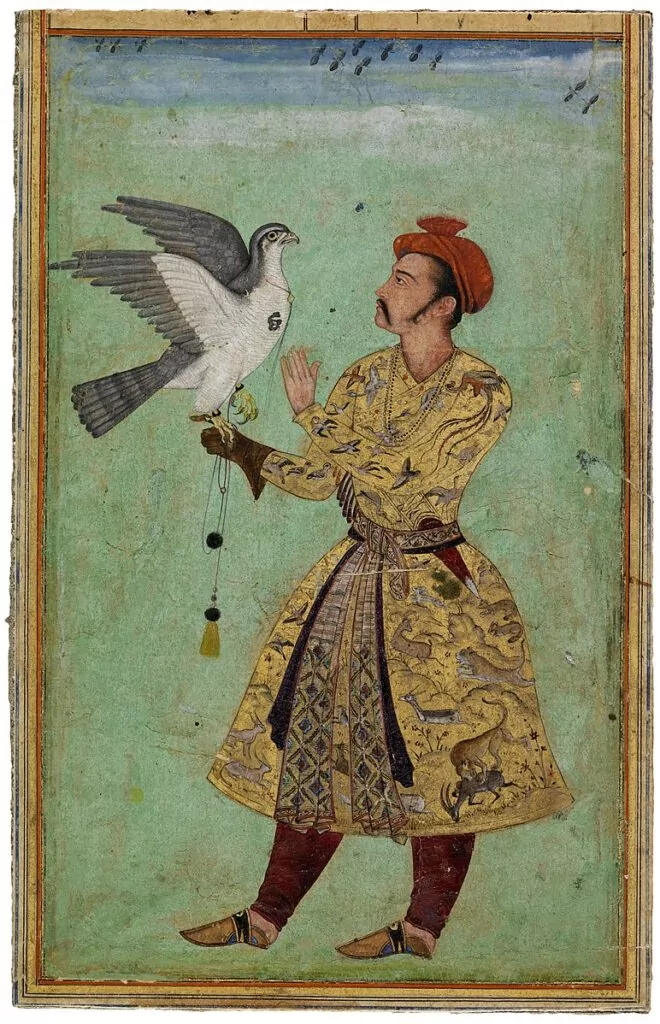
One of the most famous art pieces, Prince with a Falcon (1600–05), is just 6 inches tall and 3 inches wide but managed to trace every feather of the bird, the wisps of the prince’s hair, hunting lions decorated on his tunic, and fluttering birds.
However, the art style was in full decline by the time Emperor Aurangzeb died in 1808. As the Mughal empire weakened, the works began to disappear. The Persian Shah sacked Delhi in 1739 and took the art back to Iran as loot. Vast quantities of miniatures were brought to London by the East India Company and remain in British museums even today.
Perception of Mughal miniature paintings
Navina Najat Haider, a curator at the Metropolitan Museum of Art, said, “Mughal aesthetic is very unified, extending from architecture to painting—so painting and gardens are related. Plus, the Mughal love of nature and observation of plants is closely linked to the representation of flora and gardens in painting.” The ease of portability of the miniatures meant the artworks were traded across the world, giving them exposure. Such was their popularity that the Dutch master Rembrandt found inspiration in Mughal miniatures to create a series of drawings based on Mughal portraits.
While the Mughal empire may be long gone, the aesthetic sensibilities of Mughal miniature paintings remain strong today. Contemporary work like Raqib Shaw’s Garden of Earthly Delights X is evidence that this ancient art style has been preserved, and the influences it draws upon are more expansive than ever before! While there are other Indian schools of miniature art that existed before the Mughal dynasty and those that have thrived after, the intricacies, skill, and popularity remain unmatched.
Download the Rooftop App from GooglePlay or AppStore and enrol in our Maestro courses!
Discover us on Instagram @rooftop_app for all things on traditional Indian art.

